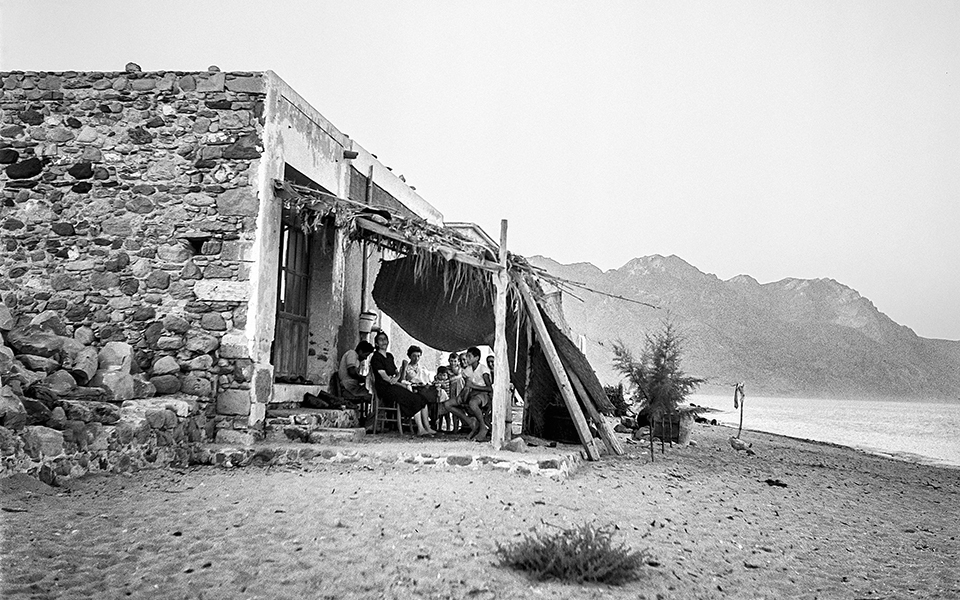
“We drove to the south side of Kos to embark for Gyali,” McCabe says of his visit to the small island, which looks like a giant fantastical sculpture with white pumice hills on one side and beautiful swimming coves with aquamarine waters on the other. “On our return at dusk to Kos, I photographed this seaside family shelter.”
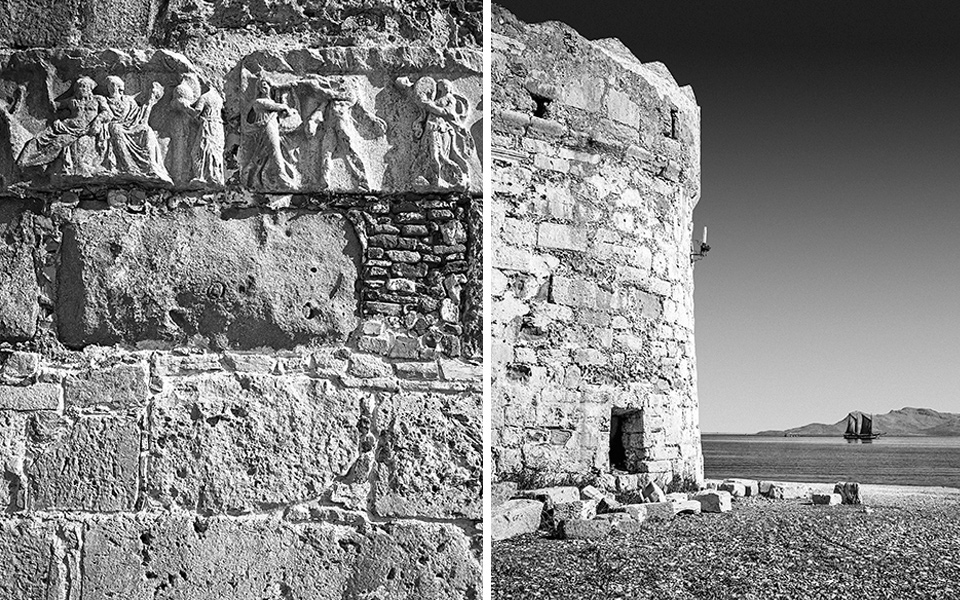
(Left) This fragment of ancient sculpture had been placed in a wall of the Castle of the Knights. It is from the frieze of the Hellenistic altar of Dionysus, which was located in the south part of the agora of ancient Kos. It has since been removed from the wall and is on display in the castle. The fragment was the subject of the doctoral dissertation of the renowned Greek archaeologist and Director of the Museum of Cycladic Art, Nicholas Stampolidis.
(Right) Robert McCabe was just 20 years old when he first visited Greece in 1954, armed with a Rolleiflex and a thirst to explore parts of the country yet undiscovered by tourists. Kos was one of these. Seen here, a part of the Castle of the Knights, with the Turkish coast in the background. A commercial caique under full sail drifts by in light winds.
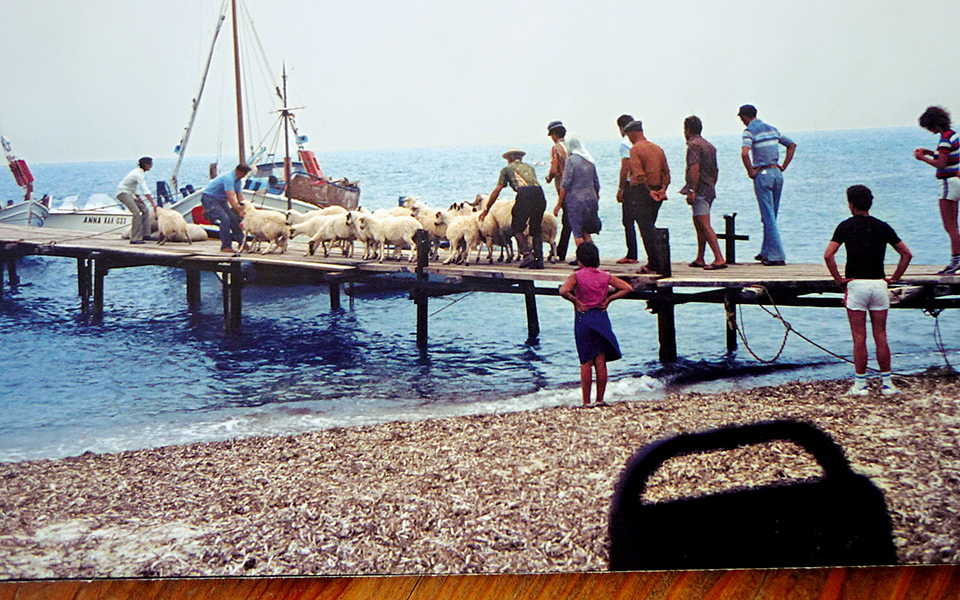
Kos used to supply its arid neighbors, including Kalymnos and Astypalaia, with fresh goods. This photograph from 1973 shows lambs being loaded onto caiques for Easter. (Dikaia Saragia Archive)
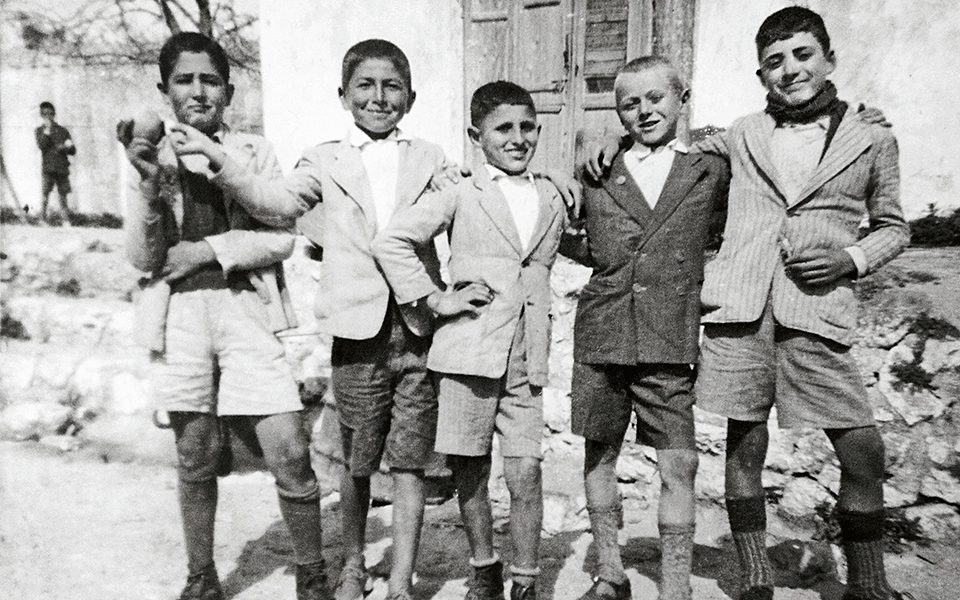
Students outside the school in Antimachia in the 1960s. Even though it’s winter, they’re wearing short trousers because cloth was in short supply back then. For many, children shoes were also a luxury. (Antimachia Cultural Association Archive)
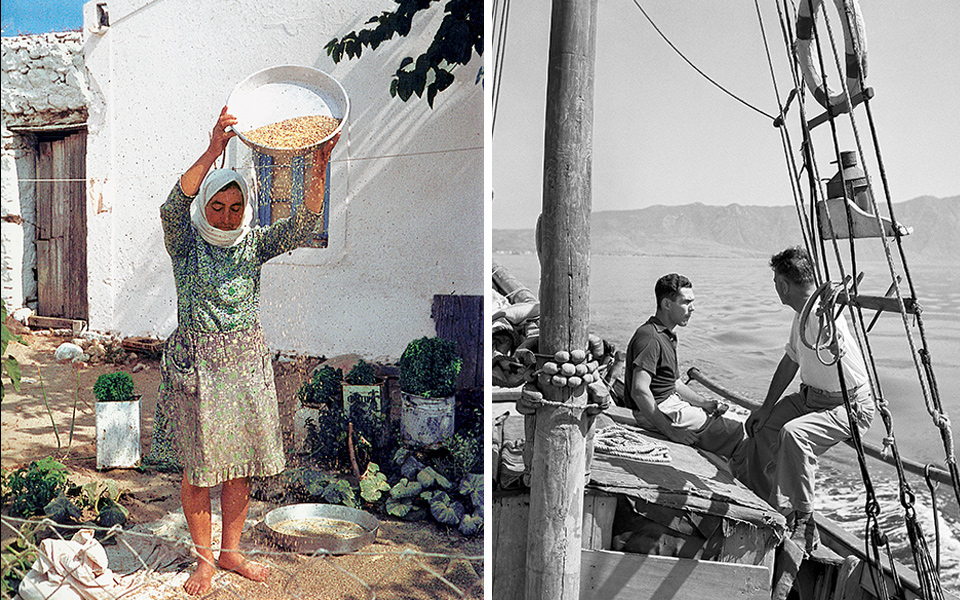
(Left) A woman separates wheat in Mastichari in the 1970s. After crushing grains or pulses with a stone, farmers would toss it from a height so that the husks were carried away in the wind and the grain deposited onto a special cloth. (Dikaia Saragia Archive)
(Right) A caique trip from Kos to Gyali, the volcanic island with obsidian lava domes and pumice deposits, which were mined in huge quantities. On the left is Petros Nomikos, who visited Gyali to inspect the quarries and loading systems, and on the right Colonel Spyros Malaspinas, the manager of the pumice quarries. The trip took about an hour.
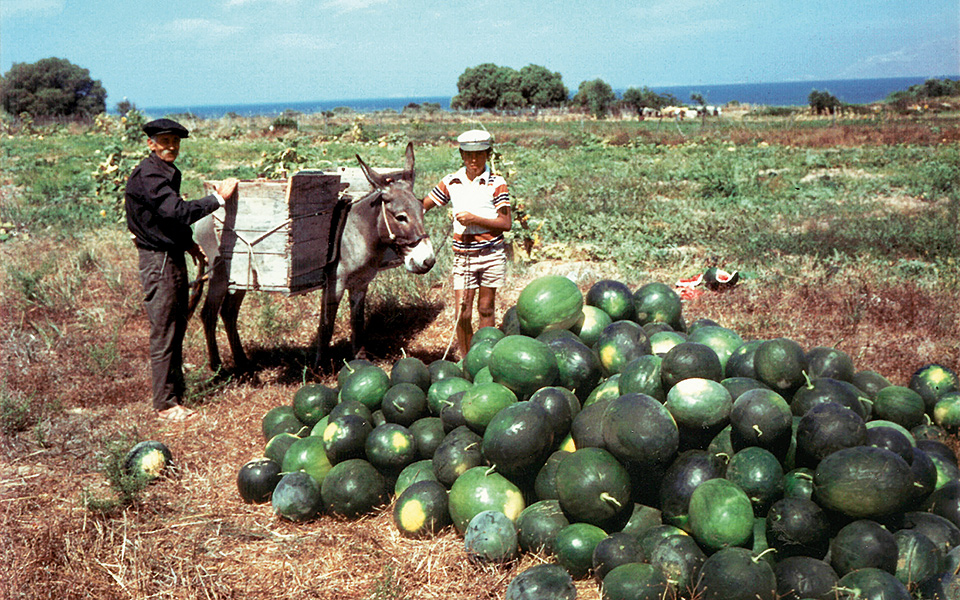
Kos’ watermelons were famous for their quality and were exported to the surrounding islands. Here, farmers from Mastichari prepare to load some onto a donkey in the 1970s. (Dikaia Saragia Archive)
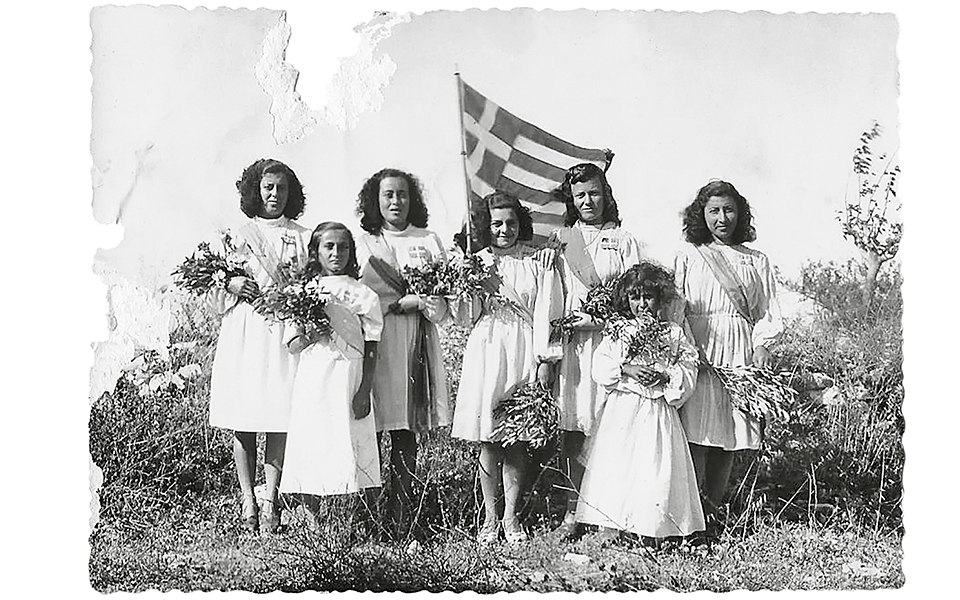
In a rare photograph from 1948, girls dressed in white celebrate the island’s official accession to the Greek state. (Polyxeni Athanasoulia Archive)










